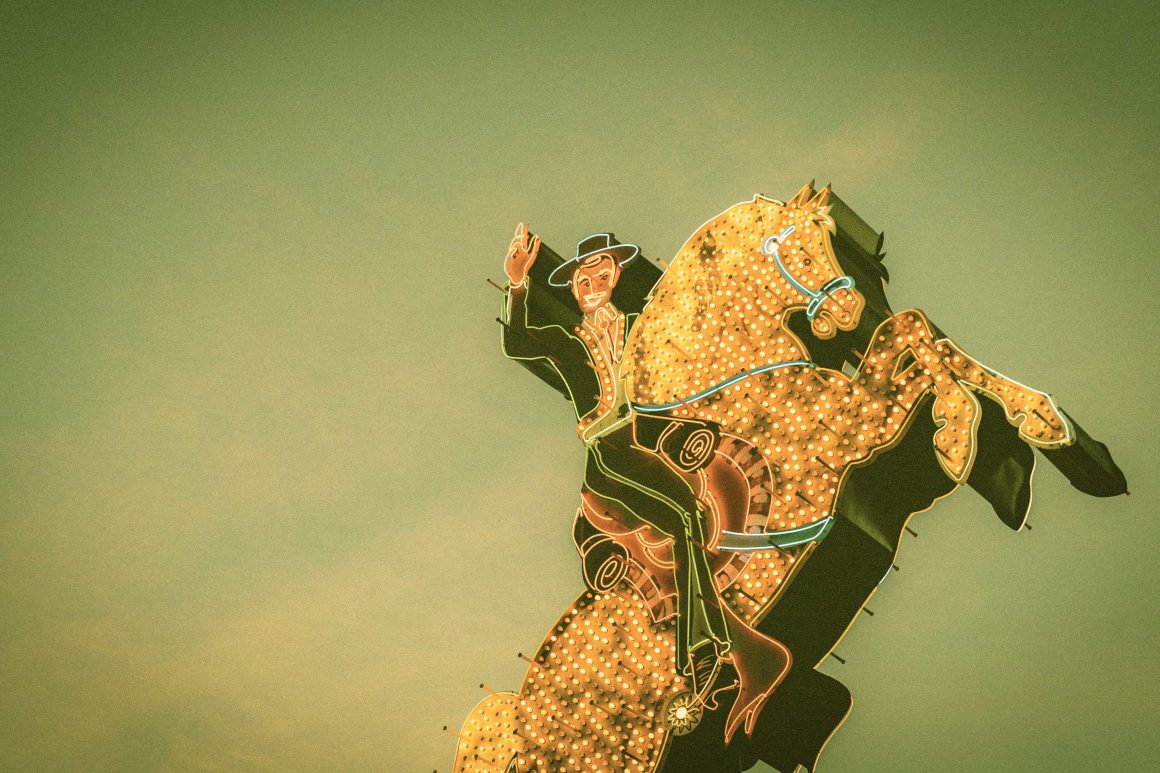
The history of the Calgary Stampede Rodeo and Rangeland Derby
By Maggie Hsu, July 4 2024—
When looking at the overall picture of the Calgary Stampede from a modern lens, one can notice subtle hints of the history that formed the 10-day event. While it is widely known for the rides and midway food with hints of Western from the cowboy boots and hats that are seen around the fairgrounds, the history of the rodeo, especially to the Calgary Stampede, is rich and deeply rooted in North American culture.
Like many modern sports, the rodeo started as a pastime for those in the past. Rodeo, the word itself, is derived from the Spanish word rodear or “to go around” and refers to the practice of rounding up livestock to be counted, inspected and branded both for practical purposes of maintaining the safety of cattle from predators and for the economic purposes of buying and selling cattle. Long-distance cattle driving was first used as a means of establishing settlements across the New World but as populations soared during the 19th century, cattle became a commodity and contributed to the American economy. These skills required to work with livestock evolved into a competitive sport when workers challenged each other to see who could complete these tasks the fastest, becoming a test of physical endurance, agility and precision.
Similarly, the invention of the chuckwagon came from necessity as cattle drives required ranchers to herd cattle across vast distances and covered parts of the country that did not have railroads, and hence they did not come across any established towns to feed themselves. Chuckwagons made for easier ways to transport a large supply of food, cooking supplies, water barrels and any personal items of the cowboys to make their trips more comfortable. However, as the economy centralised around cattle herding slowed, cowboys found a different way to make use of their vehicles as a recreational vehicle to race and compete.
Today, American-style professional rodeos like the Calgary Stampede feature the following events: tie-down roping, team roping, steer wrestling, steer roping, saddle bronc riding, bareback bronc riding, bull riding and barrel racing. Additionally, the chuckwagon races were first held as a spectator sport at the 1923 Calgary Stampede. Now known as the Rangeland Derby, it combined with the other rodeo events which helped create the Calgary Stampede Rodeo as one of the premier events in the professional rodeo season.
But what exactly are these events and how do these athletes succeed? Here are some quick summaries of the events of the rodeo:
Bull Riding: One of the most popular and dangerous events that are standard for any rodeo, bull riding requires cowboys to stay on a bucking bull for eight seconds. However, it’s not enough to stay on the bull for the eight seconds — it requires strength and balance as cowboys need to maintain control of their bodies to earn full points to top the leaderboard.
Bronc Riding: Similarly to bull riding, riders must stay on a bucking horse (either bareback or saddle bronc) for eight seconds, demonstrating their skill in predicting the movements of an unpredictable animal while also maintaining the strength to compose their posture for full marks from the judges.
Roping and Steer Wrestling: These timed events showcase a cowboy’s speed and precision in roping cattle and wrestling steers to the ground.
Barrel Racing: Primarily a women’s event, barrel racing tests speed and agility as riders navigate a cloverleaf pattern around barrels, guiding the horse tight enough to minimize time on the clock but wide enough as to knock over the barrels.
Chuckwagon Racing: A team sport, where each team is comprised of a driver who leads a team of horses to pull the chuckwagon. The driver is supported by two (sometimes four) outriders who race individual horses to follow the chuckwagon around the track. Each race typically features three or four teams facing off against each other to see who can cross the finish line first and begins with the outriders “breaking camp” by tossing a barrel (representing a camp stove akin to historical uses of chuckwagons) into the back of their wagon before mounting their horses and following the wagons as they complete a figure eight around two other barrels before circling the entire race track.
Overall, the Calgary Stampede Rodeo and the Rangeland Derby play vital roles in preserving the sporting traditions of these events and celebrate the skills and athleticism of cowboys and ranchers. Not only do these athletes dedicate themselves to training in order to perform at their best, success in these sports also demands strategic planning and precise timing like most other sports but also, a deep knowledge of animal behaviour. Most, if not all, of these athletes are ranchers at their core and have strong ties to the agricultural industry.
